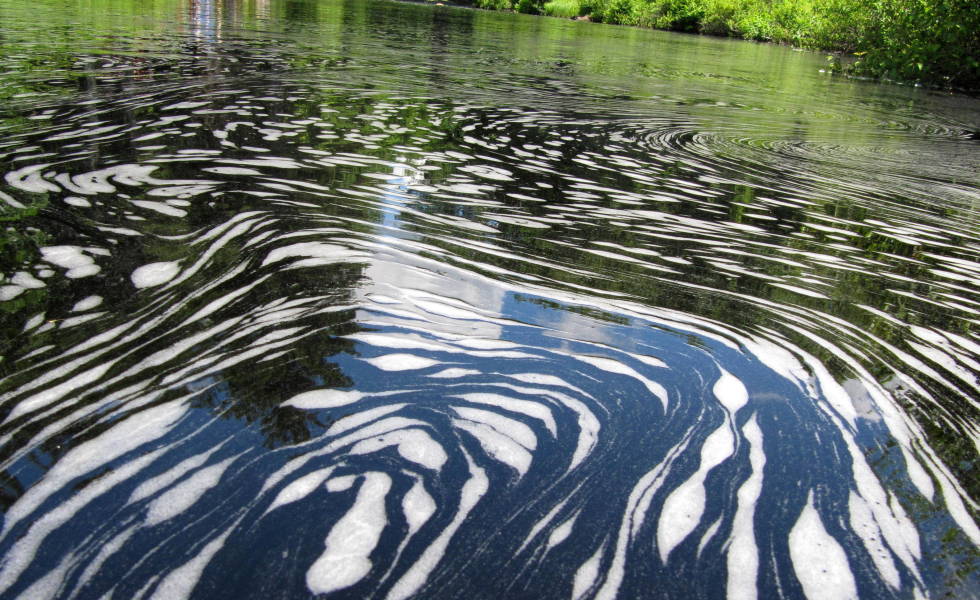
The Launch – NORA Conference at UMASS Amherst
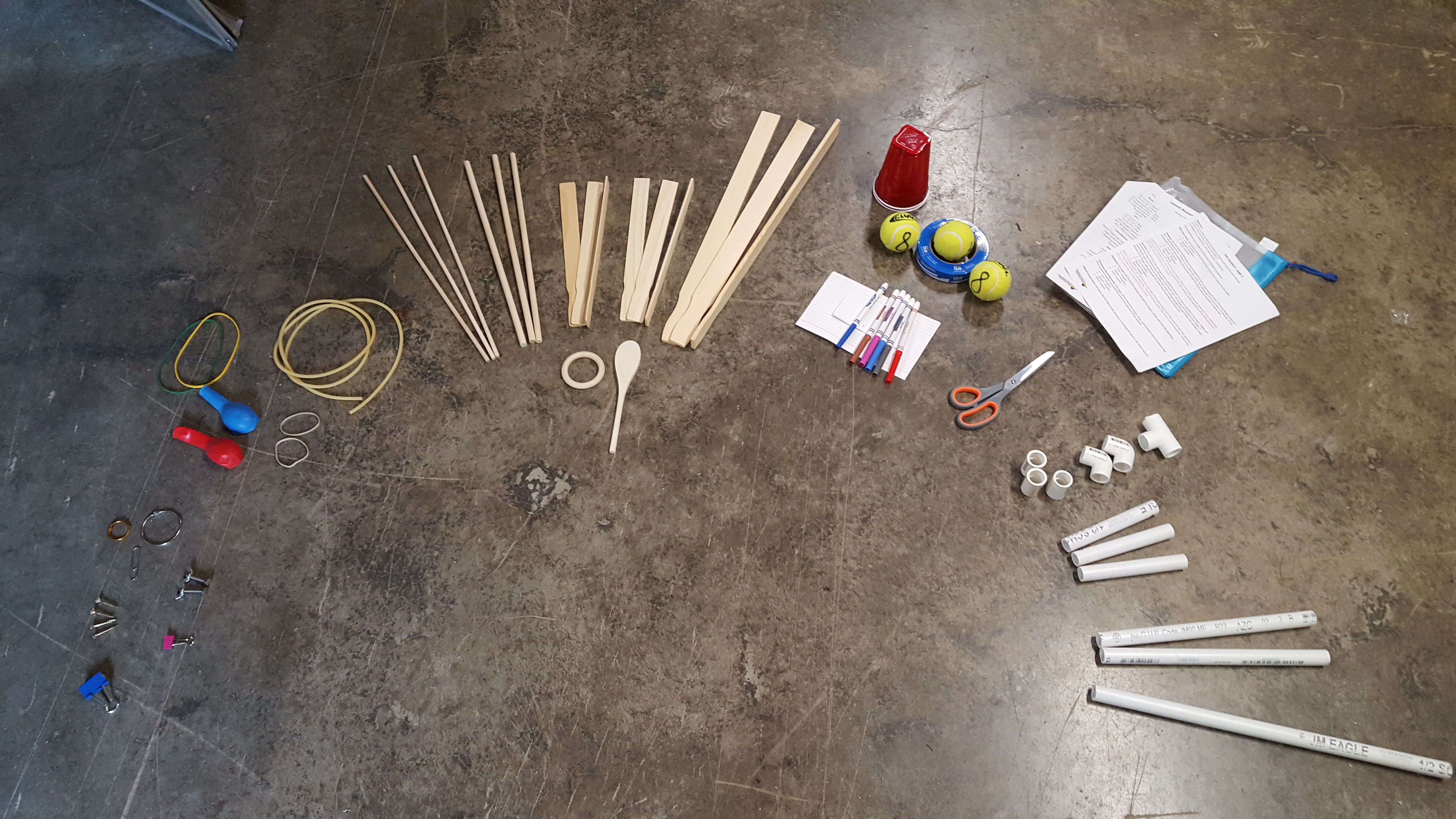
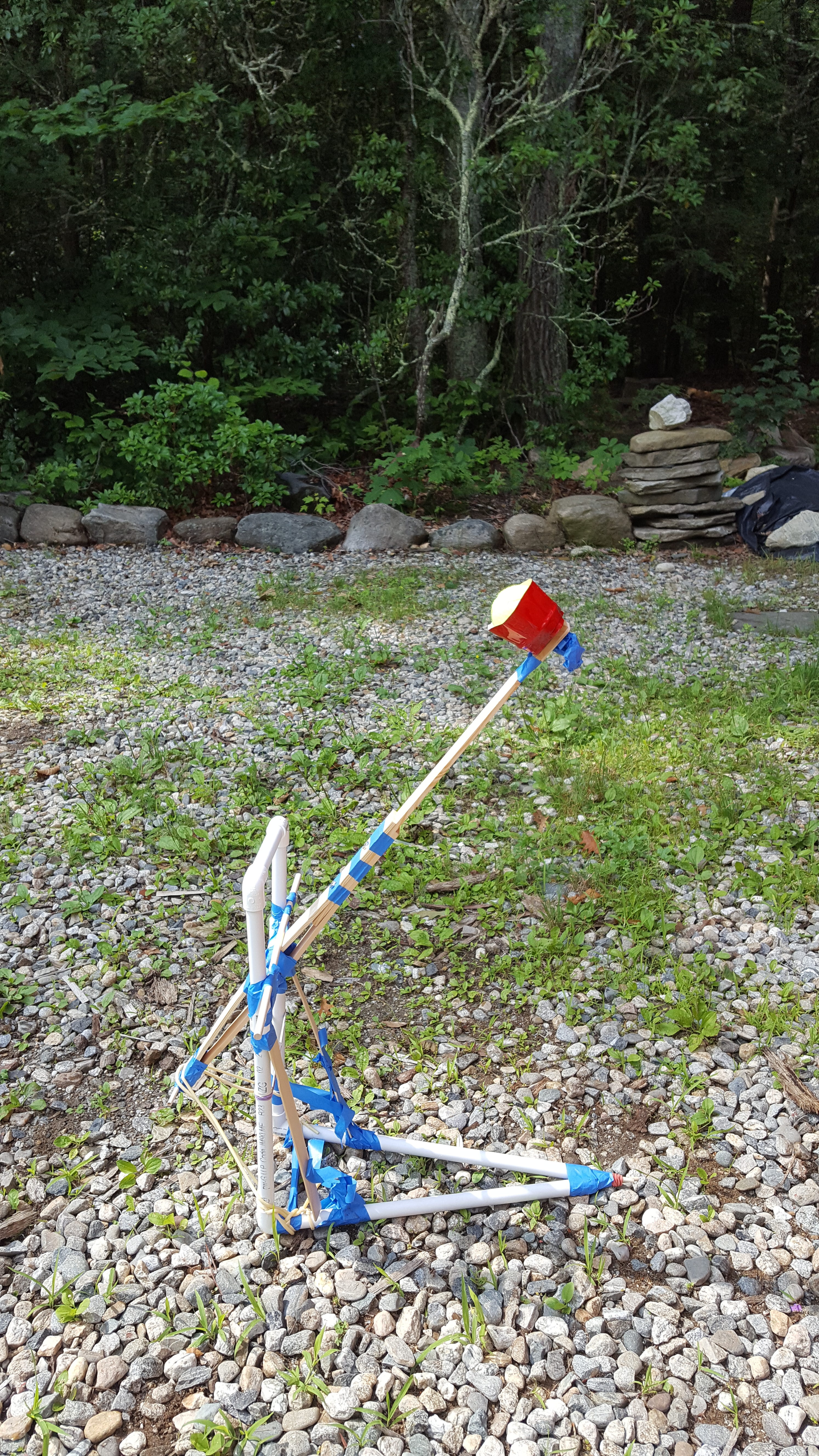
Big Brothers Big Sisters on Summersville Pond
In April, Farlin and Eric went for a paddle with the Hartford Chapter of Big Brothers Big Sisters on Summersville Pond in Summers Connecticut.
Farlin and Eric took them out during their first warm weather experience of the year. This particular crew was the core team of folks who have shown up to all big brothers big sisters programs we’ve done. There was a feeling of comradery and closeness that had been developing over the many months that we’ve been doing these programs with them.
Farlin and Eric have seen this particular group of kids really coming out of their shells and developing both confidence and competence in areas all across the board. During this program they put emphasis on taking on more of a leadership role by having the kids start off in the stern with the adults in the bow, where they had control over the direction of the boat. The kids were able to make decisions about where the group went and where they explored, and they all had a chance to get out of the boats into the water.

There was a lot of wildlife coming out of the winter fog. Specifically, they saw a ton of turtles… Like hundreds of turtles sunning themselves on logs on the side of the pond.
There was some sweet sadness and a feeling of parting because this string of programs with Big Brothers Big Sisters would be coming to an end soon, but they were talking about going to “yard goats” games together, outside of this their programming with AIAO.
Teamworks “Bag of Tricks” Training




Amherst College Outing Club – Knot Tying and Night Programs
The Bowline
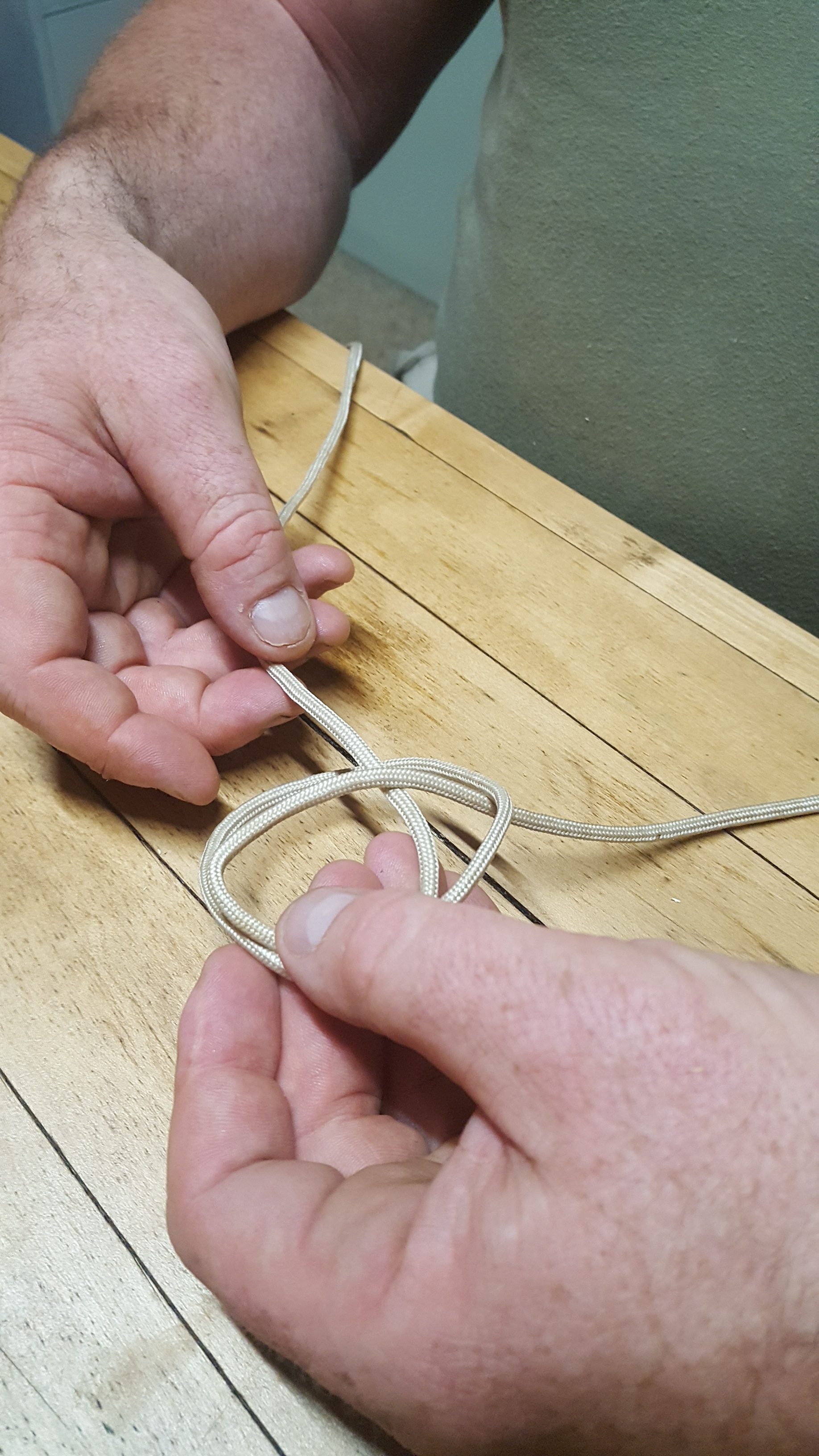
The Clove

Bald Eagle – Swimming!
After several failed attempts to majestically snatch a meal from the lake… this bald eagle decides to swim for his lunch.
Enjoy!
Amherst College Outing Club – Navigation Program

Amherst College War Memorial in the Summer
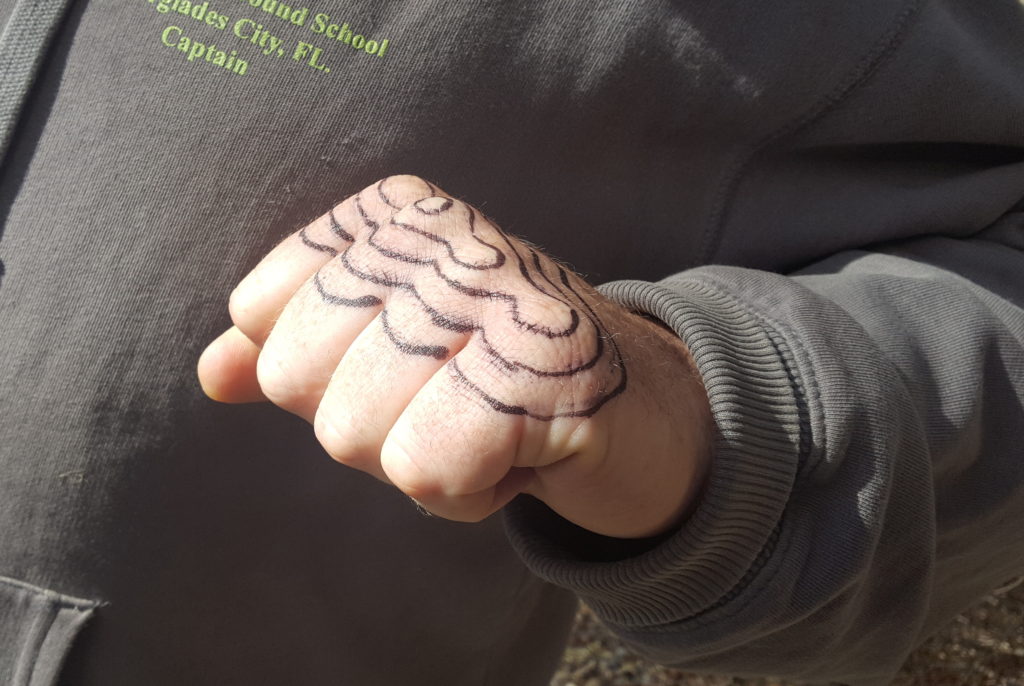
Amherst College Outing Club – Tracking Program
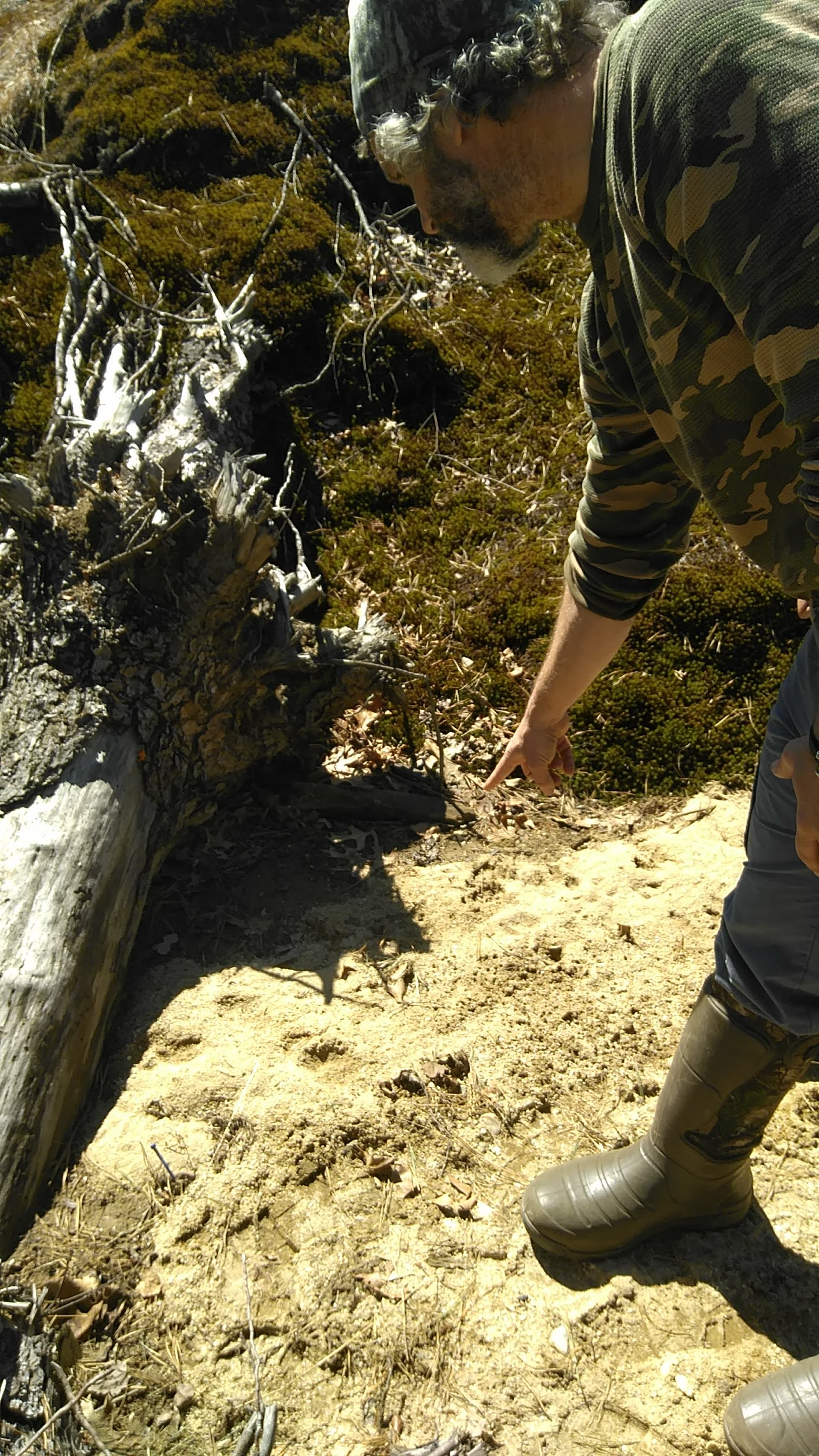
Eric and the group spotting cotton-tail rabbit tracks
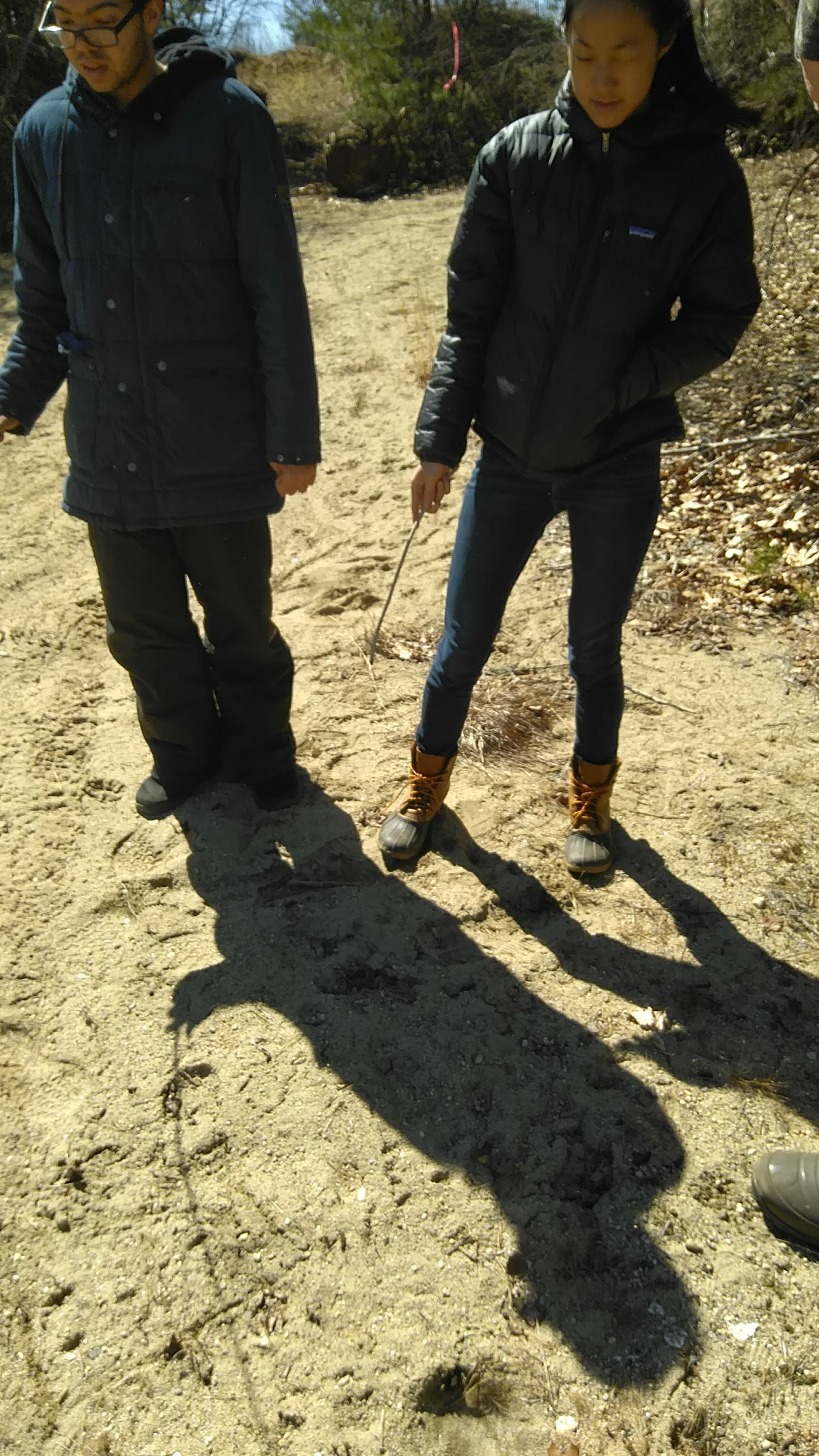
And some coyote tracks
Big Brothers Big Sisters Fire-making and Navigation – Winter 2018


This girl has used a flint and steel to catch a spark and turn it into fire – this was her first experience creating fire from scratch
Just For Fun
James is a man who loves puns. He loves reading, he loves rhyming, he loves the english language. He told me that for as long as he remembers he’s been coming up with clever wordplay. “Puns – the poor man’s poetry” he says.
There’s a playful element to puns that James brings all of the things he does. He finds a way to finagle puns into his facilitation style, his every day conversation, and even his debriefs. Like with all puns, sometimes they make us giggle with glee, and sometimes… well… sometimes, it’s just plain punishment. What did we do to deserve this James? Why are you so whimsically witty? How do you come up with them so quickly?
For most of us, it’s not so bad at all. I tend to enjoy them more often than not (mostly because I can’t come up with a pun to save my life and I’m always so impressed.) But when we ask the question “Pun or punishment?” There is one among us who will almost alway say punishment – not always out loud… but we can tell.
So, as the puns roll along we’ll share them with you, and we’ll continue to ask this question: Pun or Punishment – What do you say Kyle?
April 19th, 2018 – 3:41 pm.
None of us had an answer for him.
Back at the ranch, Kyle and I were sitting at our computer desks – minding our own business. James had been fiddling away at his computer, entrenched in research about something. The moment James started to speak I knew what was coming, but I don’t think Kyle was prepared. James looked up at me and said with a smile:
“So Christopher I was on this tracking program once, out tracking by a wetland, and a student called me over to ask me a question. He had seen some markings at the base of a tree, and he asked me ‘is this from a beaver?’ and I said ‘gnaww.'”
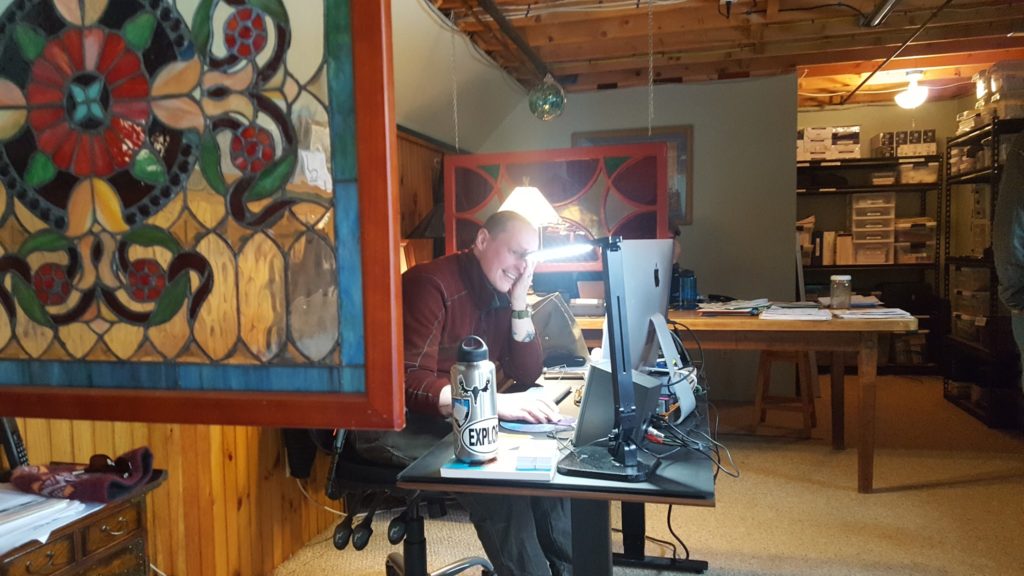

Hayloft to Thoughtloft
Last year, James tasked me and Erik Debbink to come up with a design and bring to fruition the conversion of the upstairs loft area of his barn into a meeting space/classroom. I’m going to lovingly call this project: Hayloft to Thoughtloft.

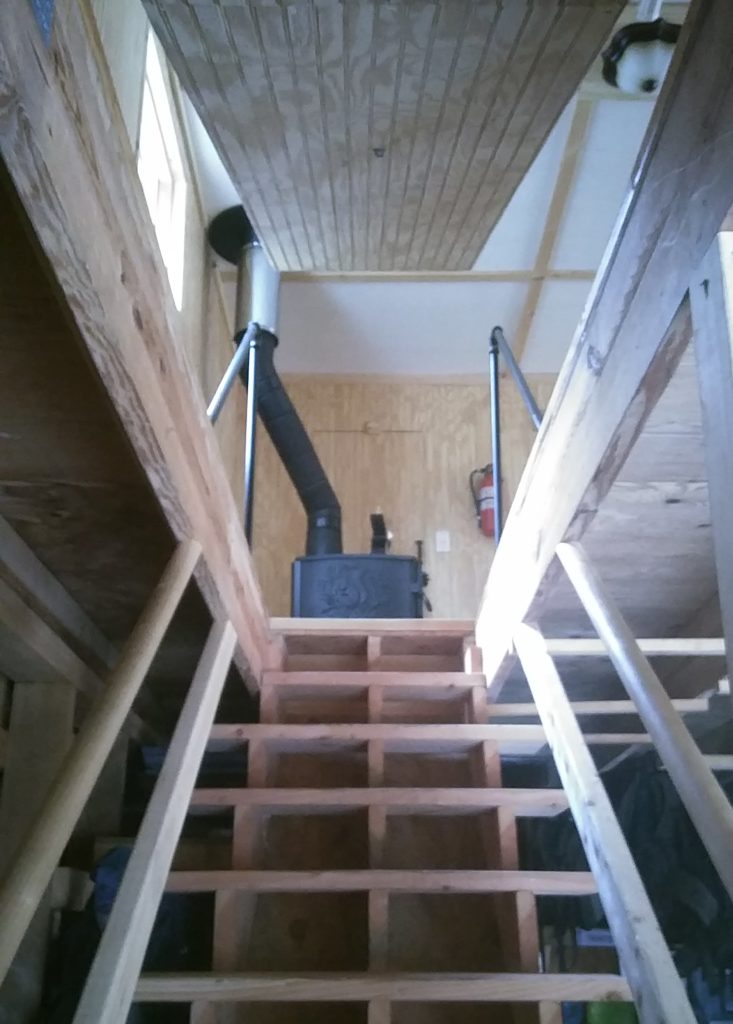
Once we had a design, we made what we call a “cut list” in the biz. Then it was off to home depot to make the first materials purchase. Over the course of a couple of months we completely transformed the space. The building began with laying down closed cell foam board insulation directly on the existing rough plywood floor, then covering that with a high grade light colored birch plywood. For the walls we chose to install plantation pine bead-board plywood panelling over the same 1.5 inch closed cell foam board backing, directly onto the existing studs. In order to maintain access to the storage space in the eves of the gambrel roof we cut plug doors and left them snug fitting and hingeless with turn buckle closures so they would stay in place but could be easily removed. For the ceiling we used a lighter plywood sheet with the same foam backing. We also left an hinged access hatch into the attic space above the rafters.
In order to let lots of light into the space to allow for the full effect of the light colored wood features of the renovation, we installed a five by five removable picture window in place of the sliding wooden doors that face the entryway end of the barn facing the house. With the removal of 4 wing nuts, two people can replace the picture window with a screen for summer airflow.
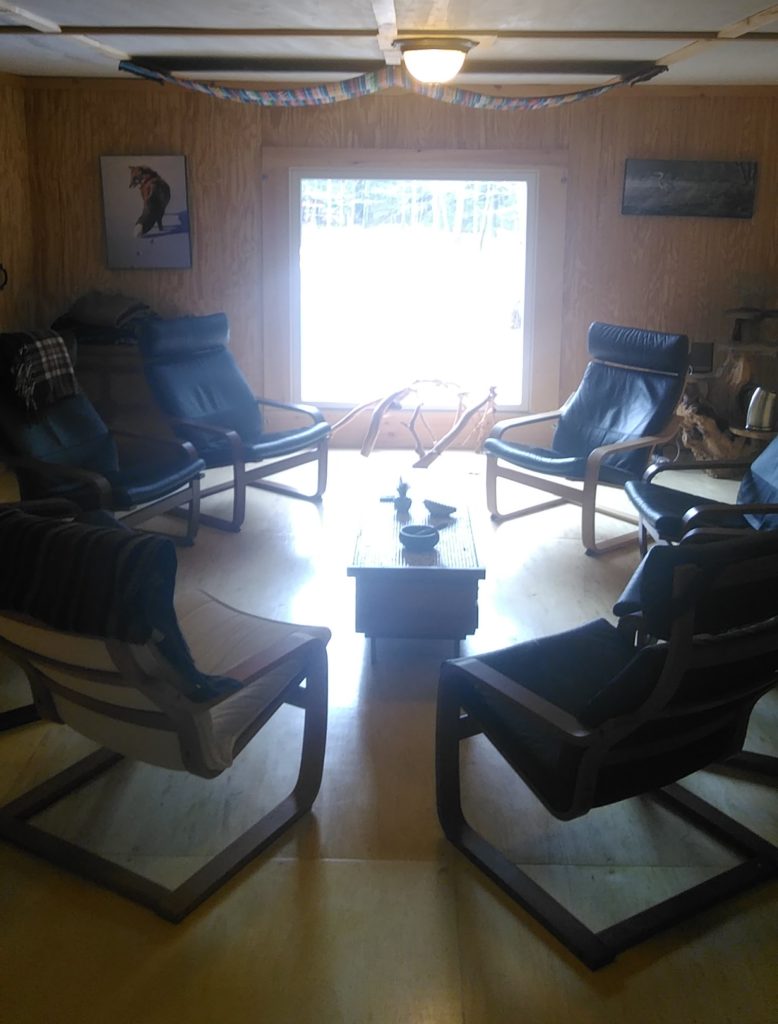
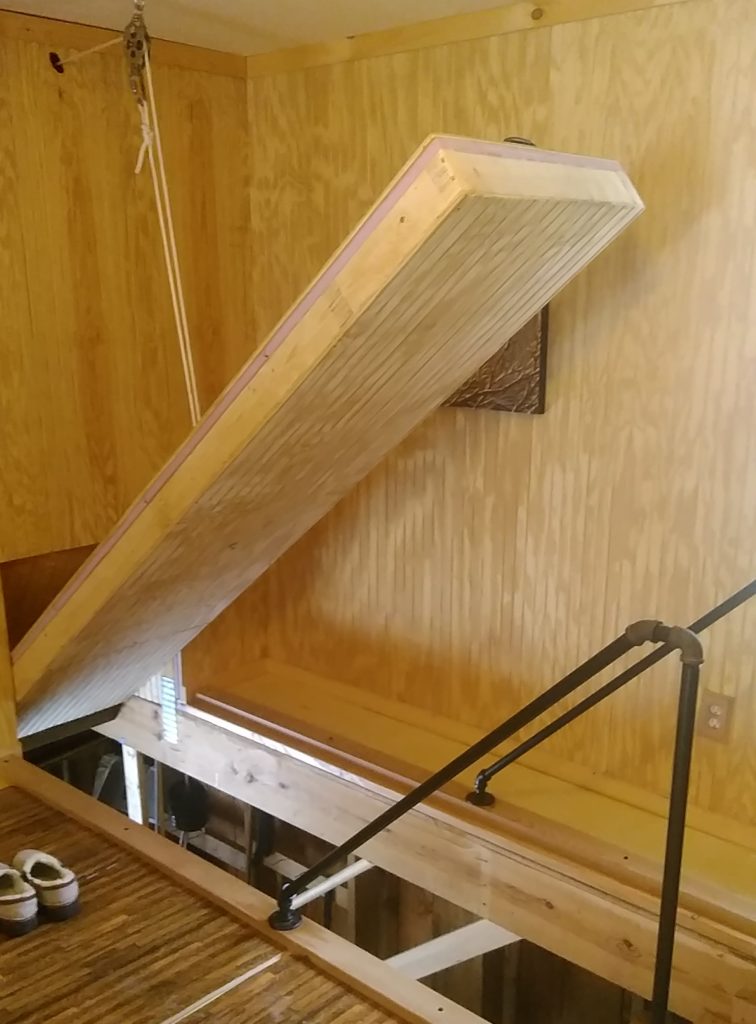 Another feature that really allowed for the blending of good old fashioned yankee ingenuity and creative use of space was the drawbridge style hatch door entryway featuring a weighted pulley system.
Another feature that really allowed for the blending of good old fashioned yankee ingenuity and creative use of space was the drawbridge style hatch door entryway featuring a weighted pulley system.
The finishing touches involved treating the floor with five coats of Vermont Natural Coatings Whey Based clear coat. We stained the ceiling with a translucent whitewash stain. We also installed a very space efficient little wood stove and connected it to the existing chimney. The end result, after all was said and furnished, is a transformation from a roughed out hay loft storage space into a warm and versatile place to meet, enjoy company and share thoughts.
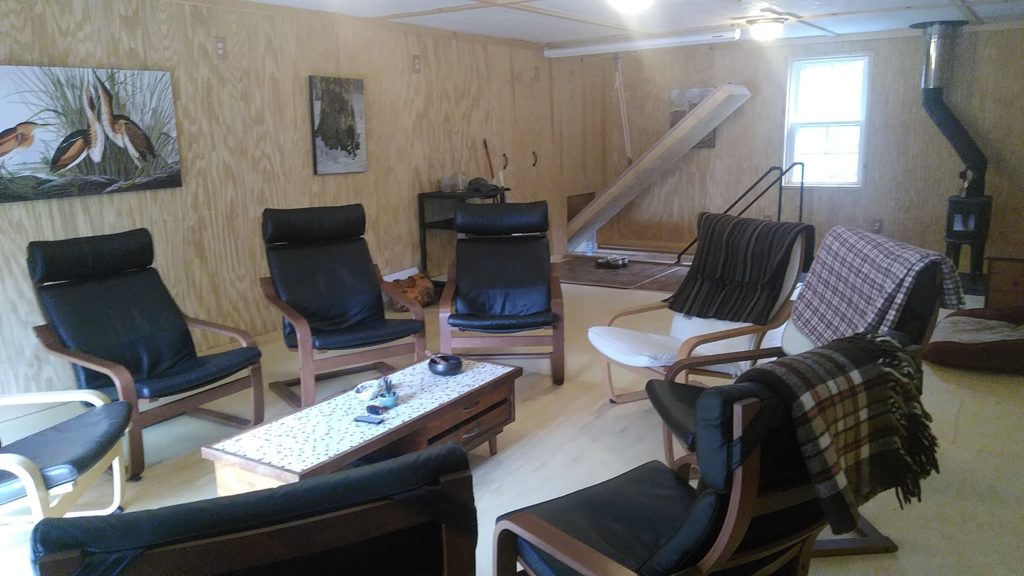
Another outcome was the deepening of a friendship as the two of us got to bring our creativity and collaborative spirit together to bear a vision into reality. I found the journey of the Hayloft to Thoughtloft project to be emblematic of the Adventure In Adventure Out experience, where one is called to show up with quality and stretch into a place of growth through shared endeavor and a spirit of collaborative spirit.
A Love of Stone
There is something archetypal, maybe even mythic about rocks and stone. They seem to beckon, call, and draw me closer in. Whether it is a rocky crag, a glacial erratic, or a polished white stone underfoot, I become mesmerized, as if a spell has been cast upon me. Maybe it is my Celtic lineage, or maybe it is the seeming immutability of stone that is alluring to this mortal being. Whatever the case, I am a sucker for stone.
When I purchased my first home, I found myself called to erect stone walls, standing stones, build cairns, and even installed a stone spiral in my front lawn. After getting married, my wife Gayle and I purchased a new home with 18 acres, and the fever ensued. From the moment you enter the drive, to the trails out back you will find that the calling of the rocks has meta-morphed into a passion that some might deem bordering on madness.
Over the past few years, I have been wandering the woods behind my home and found myself serendipitously encountering a number curious stone structures. They are dry laid stones stacked in a “U” shaped pattern. They are several courses high and usually about four to six feet wide at the opening of the “U”. The second one that I came across was on the day before the Spring Equinox of 2017. I happened to be out there about an hour before sunset and realized that the sun was going to set in perfect alignment with the opening of the “U”.

I returned the following day, on the equinox, with my dog Tannin and had the fortune of a perfectly sunny day. As the sun got lower in the sky, I felt myself excited and wondrous, as I was witness to this magical event happening in the woods behind my house. This did not seem to be a coincidence that the sun was casting its beam directly into the mouth of this structure. Who, when, and why, were questions that were swirling in my mind, while at the same time feeling awe, and gratitude for having the fortune to have been called to this spot. I love the woods for so many reasons and this was, for me, a unique and unparalleled addition to the catalogue.

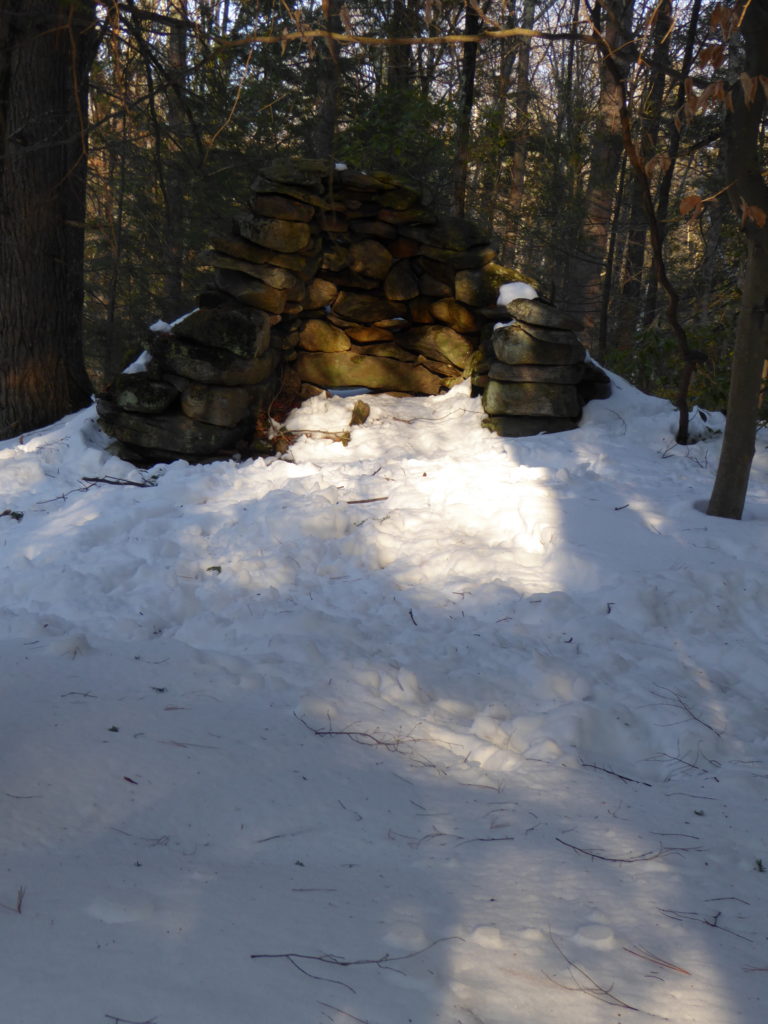
Upon returning home, I began attempting to find answers online. I came across a book called “A Guide to New England Stone Structures”. I readily ordered it and had it shipped express. As I pawed through this amazing book, I did not come across anything that looked like the structures that I was finding. I decided to write to the author and see what he might have to share. He wrote back quite quickly and let me know that the archaeological consensus seemed to be that these were ceremonial prayer seats built by the indigenous peoples of the land.

I continue to seek answers to this mystery and hope to call attention to these structures with the right people and at the right time. They feel precious and sacred and I feel strongly that they should be preserved and protected. As I learn more, I will share more. Until then, enjoy the photos, ponder the mystery yourself, and get out in the woods!
Trail Cam: Grey Fox – Winter 2018
We decided to employ one of our trail cameras in the hunt for an answer. Here’s are some of the photos that were captured.
One of two trail cams that we have set up on the property.
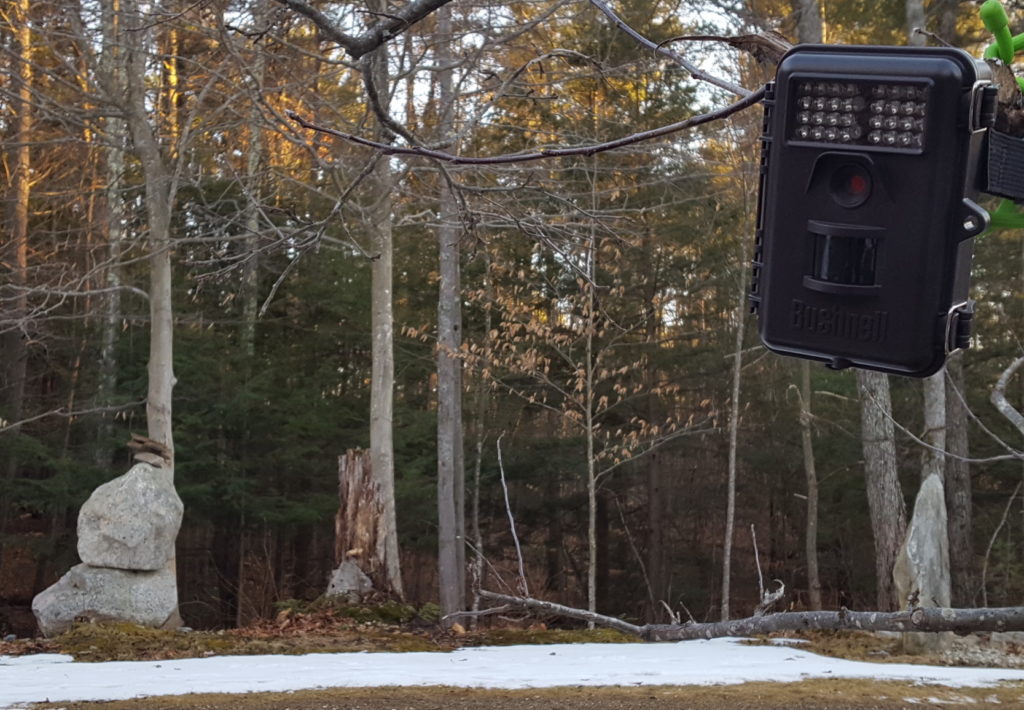
The dark strip of fur running down the tail in this picture bolstered our thinking that we had a gray fox roaming around the yard.

Much like the first photo, this one not only shows the dark strip of fur running down the tail, but also reveals the motivation for this fox to spend so much time in the yard: a meal of old apples!
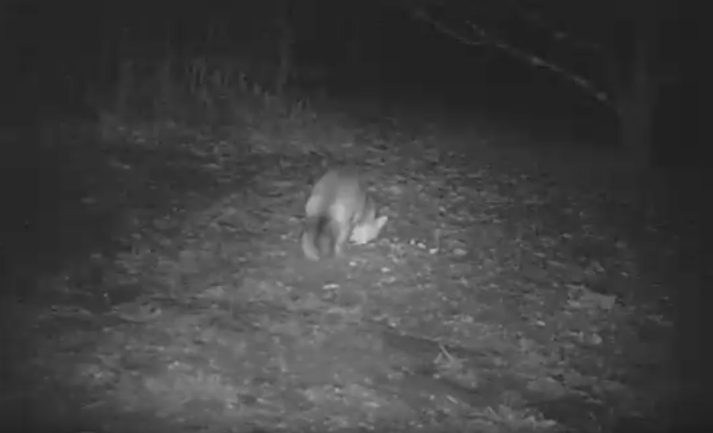
The dark bars or steaks on the muzzle of this fox are another great indicator of this being a gray fox.
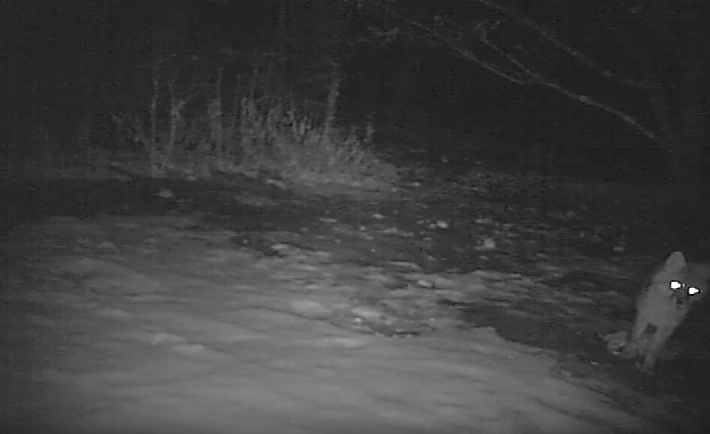
 Adventure In Adventure Out
Adventure In Adventure Out
